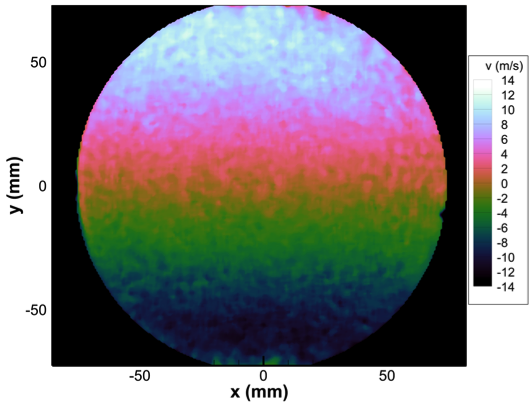Wakes produced from upstream turbines in wind plants lead to lower power production and increased loads on downstream turbines. The resulting loss of energy capture and increase in maintenance costs represent one of the largest opportunities to reduce cost of energy (COE) at the plant level. Improvements in wind-turbine design and plant layout to realize plant-scale COE reductions will require computational simulation and design tools with improved accuracy validated with experimental data.

This Sandia project seeks to demonstrate the viability of a wake-imaging system that is capable of measuring the formation and development of the flow structures near the rotor at temporal and spatial scales not accessible by current measurement techniques such as scanning LIDAR or particle image velocimetry (PIV). The technique produces a velocity image of the measurement field by using specialized cameras with a filter and software to measure the Doppler shift of scattered laser light from aerosols tracking the flowfield.
The objective of the project is to deploy the system at the Scaled Wind Farm Technology (SWiFT) facility to demonstrate the technology in a field application. If successful, this system will produce a novel measurement system capable of providing the needed experimental data for researchers to understand fundamental wind-turbine wake phenomena and to validate computational codes and design tools that will be used to develop solutions to wind-plant underperformance.